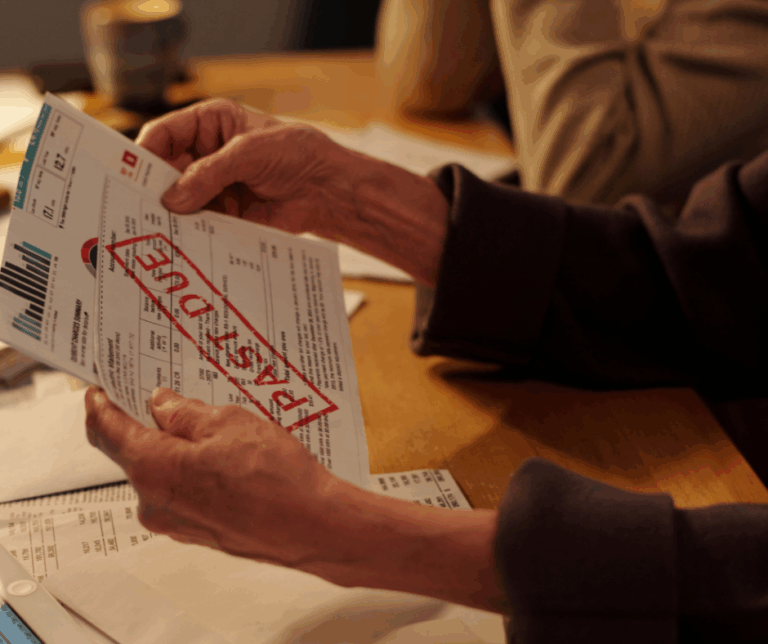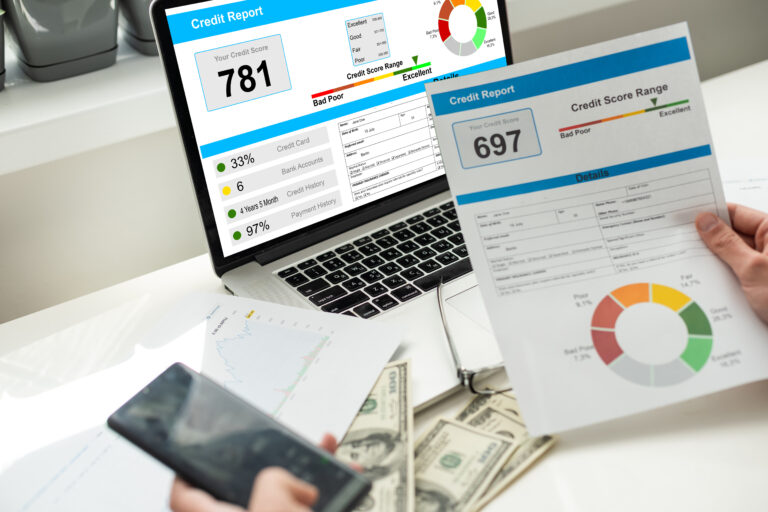A lot of people go through major financial decisions, like applying for a car loan or trying to buy a home, without ever checking their credit score. It sounds surprising, but nearly 4 in 10 young adults have never looked at theirs. Even among older adults, only a third have checked their scores in the past year.
That wouldn’t be such a big deal if credit reports were always perfect. But they’re not. In fact, about 1 in 5 people have errors sitting quietly on their credit reports. These errors can lower your score and make it more difficult to qualify for things like a loan or a mortgage. The good part is that when people find these mistakes and take action, most are able to get them removed.
This guide will walk you through where to check your score, what the numbers mean, and what to do next if something doesn’t look right.
Key Takeaways
- You can use the Fund & Grow credit monitoring service to help you stay on top of changes and protect your score over time.
- Your credit report and credit score are not the same, and both are important to review.
- A good credit score makes it easier to get approved for loans, rentals, and other financial products.
- Errors on your credit report can lower your score, but they can be fixed.
- Kaydem Credit Help can guide you through correcting mistakes and building better credit over time.
Why Your Credit Score Matters
Your credit score is a three-digit number that tells lenders how reliable you are with money. The higher your score, the easier it is to qualify for things like credit cards, car loans, and mortgages. A strong score can also help you get better interest rates, which means saving money over time.
Your credit score doesn’t only matter when you’re applying for a loan. Landlords often check it before approving a rental. Some phone companies and even employers take a quick look, too, especially if the job involves handling money.
That’s why it’s a good idea to check your score early. You get to see where you stand and fix any issues before they get in the way. If something’s bringing your score down, you’ll have time to work on it.
Credit Report vs Credit Score — What’s the Difference?
A credit report and a credit score are not the same thing, but they’re closely connected.
Your credit report is a detailed record of how you’ve handled credit over time. It includes things like loan accounts, credit cards, payment history, and any late or missed payments.
Your credit score, on the other hand, is a number that’s calculated based on the information in your report. It usually falls between 300 and 850. The higher the number, the better your credit looks to lenders.
Many people check their reports and expect to see their scores included, but that’s not always the case. Some reports don’t show your score unless you pay extra or request it separately. That’s why it’s important to understand the difference and know where to go for both.
Where You Can Safely Find Your Credit Score
Here are ways you can find your credit score:
1. Through Your Bank or Credit Card Company
Many banks and credit card companies now show your credit score right in your account dashboard. If you already have an account with them, you can view your score for free without taking any additional action. This is one of the easiest ways to keep track of your credit.
2. Directly from the Credit Bureaus
You can also request your credit score directly from the three major credit bureaus. Some offer your score for free, while others may charge a small fee or offer a trial period.
3. AnnualCreditReport.com (for your credit report)
This is the only website authorized by federal law to give you a free copy of your credit report from each bureau. You can visit the site and request reports at no cost. Keep in mind, though, that the report may not include your credit score.
What Your Credit Score Means
Once you have found your score, the next step is to understand what it says about your credit health.
Most credit scores range from 300 to 850. The higher your score, the more likely lenders are to see you as a responsible borrower. Here’s a simple breakdown:
- 300–579: Poor
- 580–669: Fair
- 670–739: Good
- 740–799: Very Good
- 800–850: Excellent
Your score is based on the information in your credit report. The main things that affect it include:
- Payment history: Have you been paying your bills on time?
- Credit usage: How much of your available credit are you using?
- Length of credit history: How long have you been using credit?
- New credit: Have you opened several new accounts recently?
- Credit mix: Do you have a mix of loans and credit cards?
How Kaydem Credit Help Can Support You
If, after checking, your score is lower than expected or if you spot anything unusual on your credit report, that’s where support from a professional can help. Kaydem Credit Help works with individuals to review their credit reports, identify potential inaccuracies, and offer expert guidance on how to address them.
Our team examines your entire credit profile, not just your score. We help remove inaccurate or outdated negative items like late payments, collections, charge-offs, and hard inquiries that shouldn’t be there. We also help you understand your options for disputing these items directly with credit bureaus.
Contact us now to get started!
Frequently Asked Questions
Can I check my credit score without hurting it?
Yes, checking your own credit score is completely safe. It’s called a soft inquiry, and it doesn’t affect your score at all. Soft inquiries happen when you check your score for personal reasons, like through your bank or credit card account. It’s only hard inquiries, like when you apply for a loan or a new credit card, that can slightly lower your score.
Is checking my credit score really free?
In many cases, yes. Most major banks, credit card issuers, and some lenders offer free access to your credit score if you have an account with them. You can also access your credit report for free once a year from each of the three major credit bureaus through AnnualCreditReport.com, which is the official site backed by federal law. Keep in mind, though, that the report may not include your score unless you request it separately.
What is a good credit score to aim for?
A score between 670 and 739 is generally considered good. 740 to 799 is very good, and 800 and above is excellent. If your score is below 670, there’s room to improve—and small changes, like paying down debt or disputing errors, can help raise it over time.
What if my credit score is different on each site?
It’s normal to see slightly different scores depending on where you check. That’s because there are multiple scoring models (like FICO and VantageScore), and each credit bureau may have slightly different information in your file. Don’t worry if the numbers don’t match exactly. Instead, focus on the general range and what’s showing up in your credit report.







